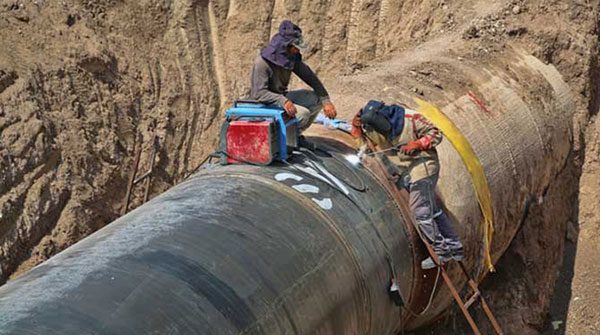 Enbridge’s Line 3 Replacement Project had bigger economic benefits than expected for U.S. communities, with thousands more jobs and nearly double the anticipated project spending, according to a new independent study.
Enbridge’s Line 3 Replacement Project had bigger economic benefits than expected for U.S. communities, with thousands more jobs and nearly double the anticipated project spending, according to a new independent study.
The mayor of Thief River Falls, Minn., said the findings run counter to the narrative by opponents, who claimed the forecasts of its economic impact were overstated throughout the project.
“Not only were the opponents wrong, they were wrong to an amazing scale,” said Mayor Brian Holmer, according to the Duluth News Tribune.
“At a time when doors for businesses in other communities were shutting, Line 3 changed that in my community.”
Calgary-based Enbridge started the replacement of the 1,765-km Line 3 oil pipeline from Alberta to Wisconsin in 2017.
The project restored the pipeline’s capacity to 760,000 barrels per day. It had been running at approximately 390,000 barrels per day since 2008 when Enbridge voluntarily reduced rates to maintain pipeline integrity.
The last segments in Minnesota were completed in fall 2021 and the new pipeline went into service on Oct. 1.
“The project surpassed all economic impact projections and created family-sustaining jobs for many Minnesotans,” said Lisa Bodine, chair of the Area Partnership for Economic Expansion (APEX).
APEX commissioned the study, conducted by the University of Minnesota Duluth’s Labovitz School of Business and Economics.
Researchers assessed the project’s economic impact in 16 affected counties (15 in Minnesota and one in Wisconsin).
The Line 3 Replacement Project was initially expected to take two years to complete but took seven due to opposition and regulatory delays. And while that increased costs and delayed its in-service date, it provided additional economic benefits for communities in the region.
|
Related Stories |

|
| Canada’s oil and gas industry is improving environmental performance
|
| The road to hell is paved with green intentions
|
| Decarbonization – How the world has lost its mind on energy
|
In 2017, the project was expected to support a high of 8,670 jobs in the 16 counties. In fact, during the peak year of construction in 2021, it supported 14,423 jobs, including direct construction jobs, indirect jobs in associated industries, and induced jobs created by related consumer spending.
Researchers estimate that 86 jobs were created in supporting sectors for each direct job created by the Line 3 project.
On average, the project supported 4,157 jobs a year over its seven-year build, compared to the average of 7,200 jobs over two years of construction that was previously expected.
This generated US$1.7 billion in employee wages and benefits, more than four times the previous expectation of US$358 million.
According to Enbridge, more than 1,500 Indigenous people worked on replacing Line 3 in the U.S. and Canada. In Minnesota, Native Americans made up seven per cent of the workforce, with over US$300 million going directly to Indigenous-owned contractors, tribal community investments and training and hiring Indigenous workers, the company says.
The University of Minnesota Duluth researchers also found a “small but still significant” aspect of Line 3 economic benefits in spending by project workers to cover expenses such as lodging and meals.
Enbridge representatives estimated that the company paid roughly US$132.1 million in these expenses, about US$10 million more than was expected in 2017.
In all, the company spent about US$2.9 billion of its US$4 billion project cost in the study area in Minnesota and Wisconsin. That’s nearly double the 2017 expectation of US$1.5 billion of the total US$1.9 billion budget.
The new Line 3 is operating and safely delivering crude oil from Canadian producers to U.S. consumers.
Enbridge anticipates that some restoration and monitoring activities will continue through 2023.
Deborah Jaremko is director of content for the Canadian Energy Centre, an Alberta government corporation funded in part by taxes paid by industry on carbon emissions.
For interview requests, click here.
The opinions expressed by our columnists and contributors are theirs alone and do not inherently or expressly reflect the views of our publication.
© Troy Media
Troy Media is an editorial content provider to media outlets and its own hosted community news outlets across Canada.

